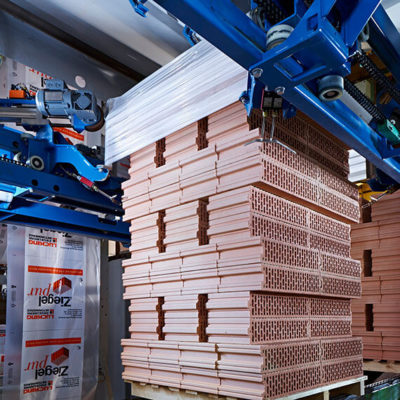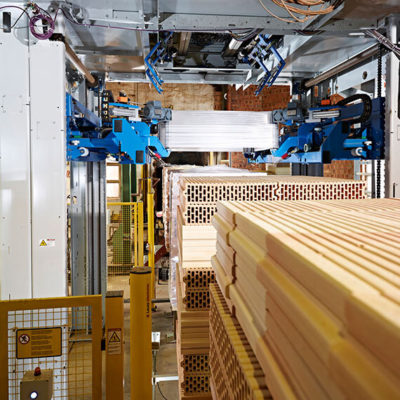August Lücking GmbH manufactures 200,000 cubic meters of common bricks, 300,000 square meters of precast floor slabs and 50,000 square meters of prefabricated walls every year. The portfolio also includes flights of stairs, balconies and prefabricated parts for special applications. The brickworks was developed in 1899 from an agricultural business in Paderborn. Today, the company employs 140 staff at its Warburg-Bonenburg plant.
“Up to now, we have used a machine which covered the palletized stacks with a shrink hood in order to pack our bricks,” explains Hubertus Becker, Plant Manager of the brickworks near Lücking. The bricks are available in various formats. Films with different inscriptions are required for bricks of the “Ziegel pur” and “Ziegel plus” product lines. In addition, a different size of film is required for smaller packs. This is measured in order to save film.
“Previously, we always had to change the film roll for these different requirements,” says Becker. “We carry out shift working, seven days a week, right around the clock. A roll change on the shrink hood system takes about 20 minutes. If we change a roll twice a shift, we have lost a considerable amount of time.”


















